
|
 |

|
 |
Project Tama-Show - Dr. Navina Jafa e-mail: navina.jafa@gmail.com June 9, 2019 Two years ago, Project 'TAMA-SHOW' was launched by the Centre for New Perspectives (CNP), a not for profit think tank that works on cultural skills and creates sustainable livelihoods through pilot programs and research. Its program TAMA-SHOW addresses marginalized Folk-Street Performing Arts, and through pilot programs CNP has illustrated unique ways to re-position, address skill upgrading, and reconnecting these performing arts with different markets. A seminal issue is that the practitioners of these several forms of performing art forms remain one of the largest traditionally self-organized skill sector. Due to utter neglect, the tradition bearers are not teaching their children. One needs to remember that it is important that these cultural skills survive not merely for conserving intangible heritage, but these skills if ingeniously re-positioned can prevent de-skilling of Skill India, generate self and organized employment and add to the economic growth of India. 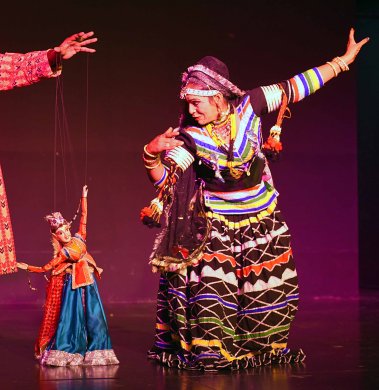 'Dilli Ka Bioscope' directed by Pt Birju Maharaj 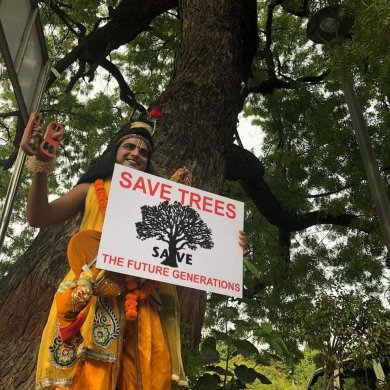 Development Communication and street folk skills - Save Trees 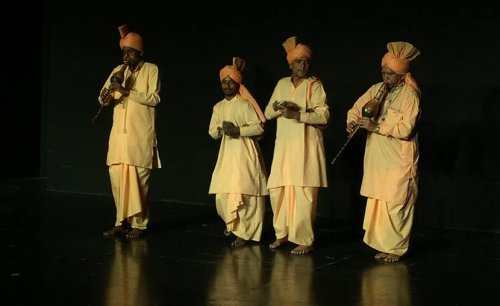 Saperas as musicians CNP explores and tests markets, it does skill building and creates a variety of programs for different markets. For this, it has worked with the Faculty of Management, Delhi University. The ultimate objective is setting up different mandalis or self-sustainable registered formal groups with trained managers, to prevent migration and to generate work in the local markets wherever the artists live. The launch of the project TAMA-SHOW was a multi-skilled bonanza directed by Pandit Birju Maharaj called 'Dilli Ka Bioscope.' It ran five shows in Delhi Gymkhana Club, IGNCA, World Bank and the Sangeet Natak Akademi. The skills presented were erstwhile snake charmers, host of folk dancers, musicians, puppeteers, mime arts, martial art dancers, acrobats, and impersonators. Presently, if there are investors, the production can be redone and produced as a ticketed show. Latest Program: CNP has tapped the market for development communication on issues of Environment and Elections. Interactive unique cultural productions are created for different performance spaces. For example, for CHETNA, a not for profit organization working on Trees of Delhi NCR, a fascinating cultural production was created around a heritage walk for the residents of Meherauli Village, along with a play for City Mall as a part of the Anti-Pollution Festival - 'Oxygen.' Recently, CNP organized under the aegis of the Election Commission and its office in Rajasthan, a Bahurupiya Yatra which had 10 performing artists with three different performative skills, namely - Bahurupiya (impersonators), Nats (acrobats) and Folk dancers. In 52 villages, an ever new interactive play pulled the local rural audiences and motivated them to vote. With a local partner in Rajasthan, CNP hopes to take this group of artists to the next level where gradually markets are ensured and this group is able to stand on its own. 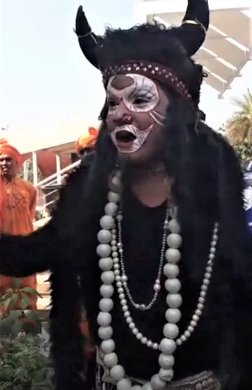 Bahurupiya as Djinn 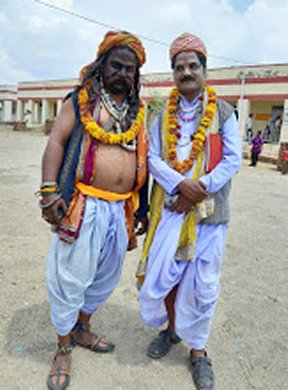 Feroz and Shamshad Bahurupiyas for Elections 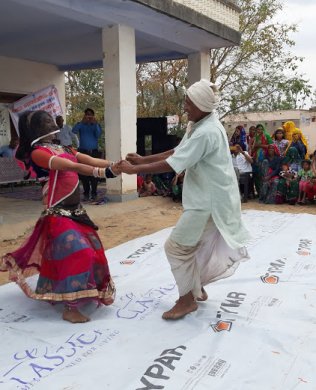 The voter and the dancer-Ganga Lahiri 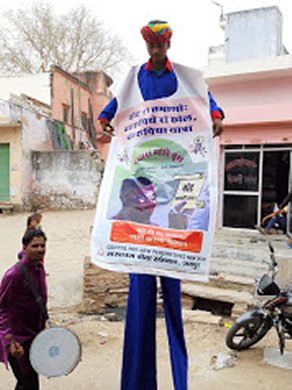 Acrobat in the Bahurupiya Election Yatra The model for development communication also involves a tool impact survey that allows for overall information on the impact of the cultural performances as much as the impact of the development programs. The next program is a satirical play on Environment titled 'Pollution Hazir Ho' directed by Sayeed Alam. Most skills for this play are performed largely in streets, village squares. The intention of re-positioning the skills is about safeguarding their inherent character, but tweaking them in a manner that: 1. Different performing arts like snake charmers, traditional magicians, puppeteers, bahurupiyas, folk musicians and dancers work together since most perform individually. 2. The core character of most performance skills in India is upaj, or manodharma or impromptu innovations. This characteristic displays the creative genius of an artist as much adds to dynamism of the performance tone. Several traditions from the folk silo are still not a part of the formality of the proscenium. It was thus important that the re-positioning of these performing arts incorporated the freedom of the artists to innovate while performing and yet learn some formal rules related to the change of performance space - the stage. CNP has insisted that the balance of core identity of the art form is sustained. 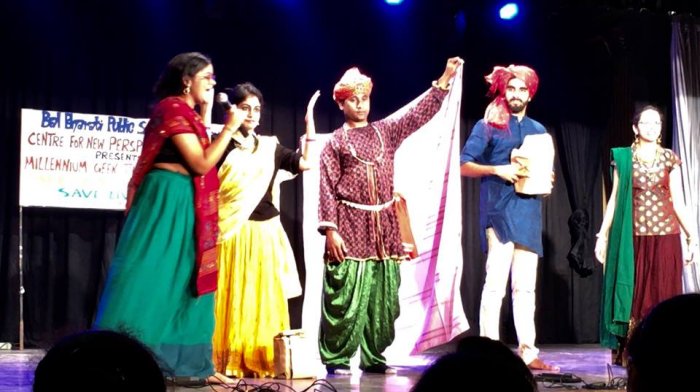 Theatre of Physics - Quantum connection with traditional magicians for schools Some of the modules to test markets which we have done: 1. Market - Schools - Class 6-8: We created a production titled 'Theatre of Physics.' The series of programs had some wonderful physics undergraduate students who co-acted with magicians, folk musicians. Edu-entertaining, the play had the children wishing Physics was taught like this. For example, when the students acted and spoke about gravitation, the magician performed levitation. We are presently exploring with the Department of Physics in Delhi IIT to create a sustainable model. In this manner, some of the performers will get continuous work. 2. We have also conducted a baseline cultural skill survey of Delhi NCR where there are about 10 skills in the folk-street performance category; and about 3500 practitioners. Taking three manuscripts on skill categorization from different regions we have categorized the performance skills in 4 categories. We have a blueprint on the entire trajectory of mapping and creating employment. Provided we are brought on board with the Government so that these innovative programs can be implemented. "The Habitat Centre, Book My Show has come on board to assist. However, the SNA, the National Academy of Performing Arts though in the past was supportive, no longer answers emails, and has asked for a substantial payment to do the rehearsals in their premises," says Shailaja Kathuria, Director of the CNP. Before starting Project TAMA-SHOW, I worked at the Smithsonian Centre for Folk Life, Washington DC, on Cultural Management, and developed models for economic generation by cultural bodies. We have several innovative strategies and ideas about how cultural organizations like the SNA/ IGNCA can generate incomes without squeezing their already impoverished target beneficiaries, the creative communities or organizations like ours. We are willing to come on board. But at least let organizations like SNA support and not discourage us. Navina Jafa is Vice President, Centre for New Perspectives. Post your comments Please provide your name and email id when you use the Anonymous profile in the blog to post a comment. All appropriate comments posted with name & email id in the blog will also be featured in the site. |